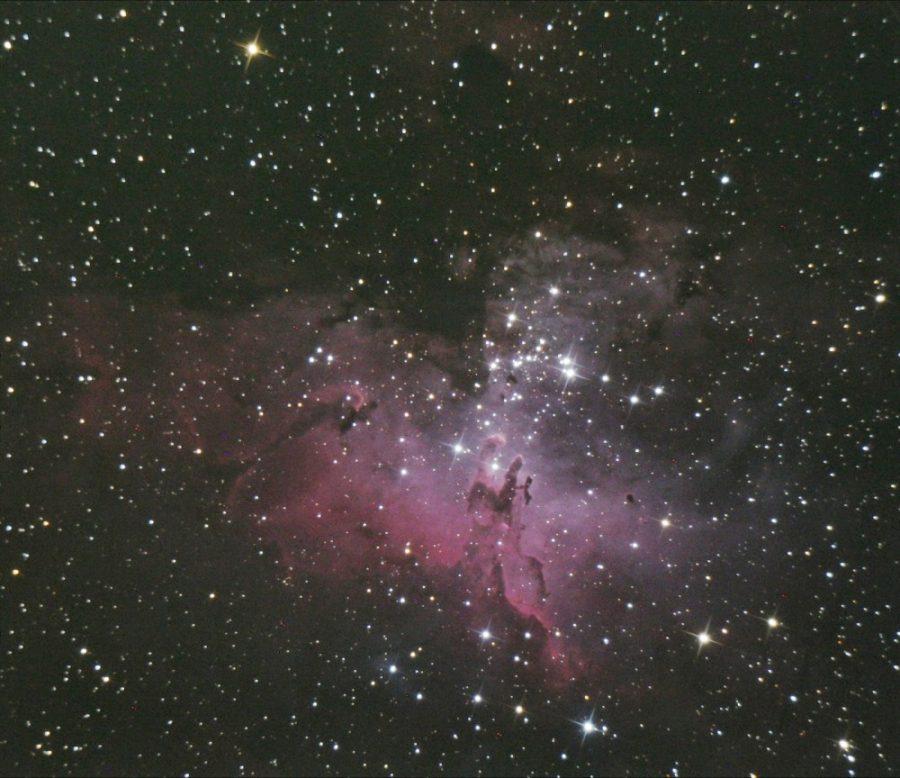FROM UATV
The Steward Observatory Mirror Lab was officially renamed last week in honor of Richard F Caris, who donated $20 million…
Posted by UATV 3 on Thursday, September 24, 2015
Most people would never guess that housed on the east side of Arizona Stadium is the Richard F. Caris Mirror Laboratory. Funneling into ZonaZoo, students pass by the mirror lab each football Saturday, and many may wonder about the work that goes on at the mirror lab, and about those who work there.
The mirror lab team is made up of experts from many disciplines, including scientists, engineers and technicians, all working on an impressive new way to cast and polish mirrors to be used in telescopes. Sitting on air pads to reduce vibrations from passing traffic or seismic activity, the lab is both a design and manufacturing facility for the lightweight, honeycomb-shaped telescope mirrors.
The polishing team at the lab is continually working on new ways to achieve high accuracy of polishing on the deep curves required for the mirrors they make. For the 8.4 meter mirrors they make at the lab—the largest in the world—the accuracy of the polishing has to be within 100 nanometers.
“Imagine the whole mirror scaled up to the size of continental North America, then the highest bump is 1 inch high,” said Hubert “Buddy” Martin, the project scientist for the polishing team at the mirror lab. “It expands the whole continent, and the highest bump is an inch high and the lowest valley, the Grand Canyon, is an inch deep.”
This polishing precision is especially important for the creation of the Giant Magellan Telescope.
The six outside mirrors of the telescope are aspherical, with a shape designed specially to focus incoming light from the stars.
The polishing process involves two parts: a diamond-generated shaping followed by a trip to the polishing cell, which shapes the mirror at an even more precise scale.
Optical engineer Jonathan Davis was the lead project engineer in charge of rebuilding the diamond-generating machine, which is currently in the final process of the super-fine finish on mirror three for the Giant Magellan Telescope.
“The diamond wheels on this spin at about 1100 revolutions per minute and basically they erode away the glass,” Davis said.
Zooming in
Davis has been working at the lab for 11 years. He first came to UA after he discovered the mirror lab provided a tuition reimbursement for employees. He sent in his resume and ultimately got the job.
“I didn’t really get into school at first, was kind of bored … not really into the science aspect of it at the time, and then I got right back into it and started my degree at the College of Optical Sciences,” Davis said.
Growing up in Rochester, New York, Davis first expressed an interest in astronomy around age 11, however after his telescope broke, his interest waned. A few years later, astronomy piqued his interest once again, and he became involved with the Astronomy Club in Rochester. He then started building his own telescopes. This eventually let to him starting his own business creating equatorial mounts to hold telescopes.
“So here I am, in high school, making these telescope mounts,” Davis said. “Turns out that really helped solidify my studies.”
The unique type of work that Davis is able to do at the mirror lab is a part of why he enjoys it so much.
“I love drilling down to extreme detail and doing stuff that is unusual and world-renowned,” Davis said. “I wouldn’t be very satisfied doing anything that is routine or boring and doesn’t really ask a lot. This is novel; all the time there are new challenges that are incredibly complicated. There are a lot of variables—I like that.”
For Davis, his passion for astronomy transcends his day job. He is also an avid astrophotographer, and enjoys seeing the parallels between nature on earth and astronomy in the universe.
“Going out and doing astrophotography and catching photons that were created from some nuclear property billions of years ago, and it went from there and traveled all the way across the universe and now its on my detector registered as a bit on my computer, and then all those bits line up and you get an amazing image,” Davis said.
The Richard F. Caris Mirror Lab is a hub of innovation, with the passionate team members constantly searching for new ways to stay ahead of the curve.
Follow Natalie Robbins on Twitter.









